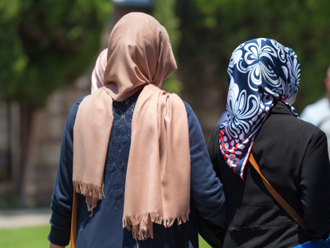
It is difficult to imagine the dynamics of the November 23, 2013 meeting when Qatar’s Emir Shaikh Tamim Bin Hamad Al Thani was effectively summoned to Riyadh and made to sign a pledge of compliance before Saudi King Abdullah Bin Abdul Aziz.
The 32-year-old emir was reportedly given a dressing down by the 89-year-old king in a meeting that was facilitated by 84-year-old veteran mediator and emir of Kuwait, Shaikh Sabah Al Ahmad Al Sabah.
Saudi Arabia and other Gulf states had had enough of Qatar’s regional adventurism. They wanted an end to its interference in their internal affairs, its sheltering of Muslim Brotherhood figures who incite against them, as well as its support for the group in Egypt and the wider Middle East. Faced with elder statesmen of his grandfather’s generation, Tamim complied.
Last week, however, three Gulf countries, Saudi Arabia, the UAE and Bahrain, withdrew their ambassadors from Doha due to what they said was Qatar’s failure to live up to that pledge.
The Qatari government issued a short and diplomatic response, expressing disappointment, but its media and anonymous government officials mobilised the next day to send a clear message: Qatar will not change its ways “no matter what the price”.
From the Gulf trio’s perspective, after over a decade of a menacing Qatari foreign policy, they were presented with a golden opportunity to reorient Doha when Qatar’s former Emir Shaikh Hamad bin Khalifa decided to abdicate in favour of his son Tamim last June. This was a chance to rein in a young emir before controversial policies inherited from his father were entrenched into his new regime.
Age disparity, however, may have worked for both sides. It is important to remember that the median age of Shaikh Tamim’s counterparts in the Gulf is 75, and that is likely to have factored into his decision to defy his neighbours.
With the Saudi ultimatum, Shaikh Tamim was faced with two options: totally submit to his neighbours’ diktats and allow them to mould the new Qatar into a subordinate regime for the rest of his term as emir, or resist for now, risking the wrath of his elder counterparts for a decade or two until the next generation of rulers came in, with whom he could start afresh. In about five decades, roles may be reversed and he may find himself to be an elder statesman — in seniority and age — among what may be a significantly younger group of leaders in the Gulf. For Tamim, the decision to assert independence today may have been a long-term investment, however risky it may be.
Facing isolation from much bigger and powerful neighbours, Qatar may look to other states in the neighbourhood for support. Following Tamim’s phone call to Oman’s Sultan Qaboos to discuss the crisis, speculation ran rife that Doha would seek an “alliance” with Oman, leading to the emergence of two axes in the GCC.
Qatar has been referred to as a maverick in the region. The real maverick in the Gulf however is Oman. It was Oman, after all, that sang a different tune than its neighbours when it became the only Gulf state not to sever ties with Egypt’s Sadat after he signed a peace treaty with the Israelis, then became the first Gulf state to give them diplomatic recognition. It established relations with Khomeini’s Iran and refrained from allying with its neighbours against it during Iraq’s war on that country.
More recently, it has quashed the idea of a Gulf union that Saudi Arabia has insisted on, and instead of pushing for more sanctions and war on Iran, it has facilitated its coming out of its international pariah status. Since then, bilateral relations have witnessed a massive boost, with joint projects worth billions of dollars being announced in recent weeks.
Yet, Oman has never faced the rebuke that Qatar faces today. Its foreign policy, while unorthodox for the region, was based primarily on fierce pragmatism that was, unlike Qatar’s, kept in check by its aversion to stepping on its neighbours’ toes.
Aside from being bent on acting independently of the GCC, there’s very little in policy positions that Oman and Qatar share. Doha’s activist regional policy is antithetical to Muscat’s approach of regional passivity, and it is unlikely to find much favour there. It is therefore highly unlikely that Oman would enter any kind of alliance that may antagonise the GCC or create a counterweight to the Gulf trio.
Shaikh Tamim is likely to be well aware of this, which is why he may instead be looking to Oman for empathy and a pat of support on the back.
When Sultan Qaboos came to power at age 30 in 1970, he too was the youngest ruler of a Gulf Arab state. Oman faced regional isolation and multiple rebellions that had, to varying degrees, received support from the very states it joined in founding the GCC with a decade later. Even after the GCC’s founding, interference in Oman’s affairs did not cease. But that did not deter it from continuing to function within the GCC’s framework while charting a foreign policy independent of it. Gulf neighbours may have frowned upon it, but they learnt to come to terms with it over the years.
Today, Sultan Qaboos is the only living ruler among the founders of the GCC, and he is the longest-reigning Arab ruler. Having had a head start from his generation of rulers, he commands the kind of respect in the region that Shaikh Tamim perhaps seeks to similarly achieve in the coming decades — hoping that the GCC will one day come to terms with a Qatar that does not rotate in its neighbours’ orbit.
The task ahead may be significantly more difficult though — considering Qatar’s size, geography and controversial regional policies. But this is a gamble that Shaikh Tamim appears to have chosen to take.









